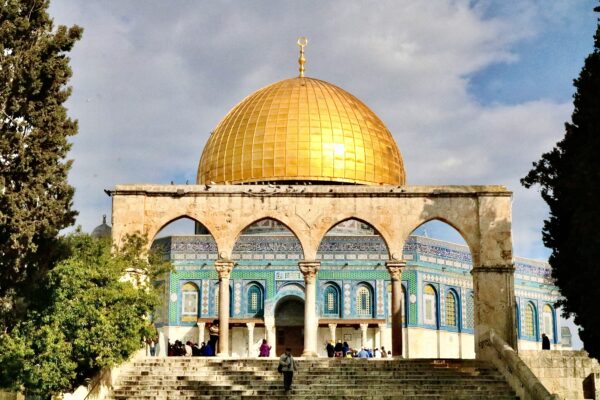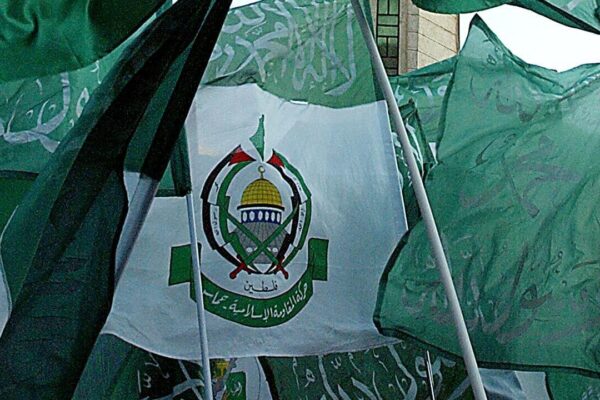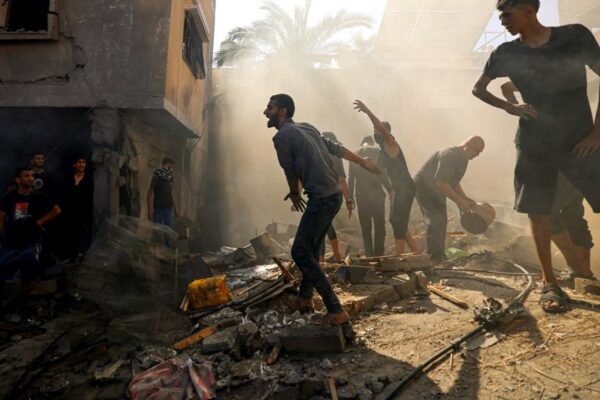“As our group walked through the old city, there was the frequent, ‘Assalaamualaikum!’ called out to us. What was it like to know that foreigners had come to visit your land, a place you’ve been holding onto for so many years?”
“As our group walked through the old city, there was the frequent, ‘Assalaamualaikum!’ called out to us. What was it like to know that foreigners had come to visit your land, a place you’ve been holding onto for so many years?”
This is Part II of a series of traveling to Palestine.
Through The Old City
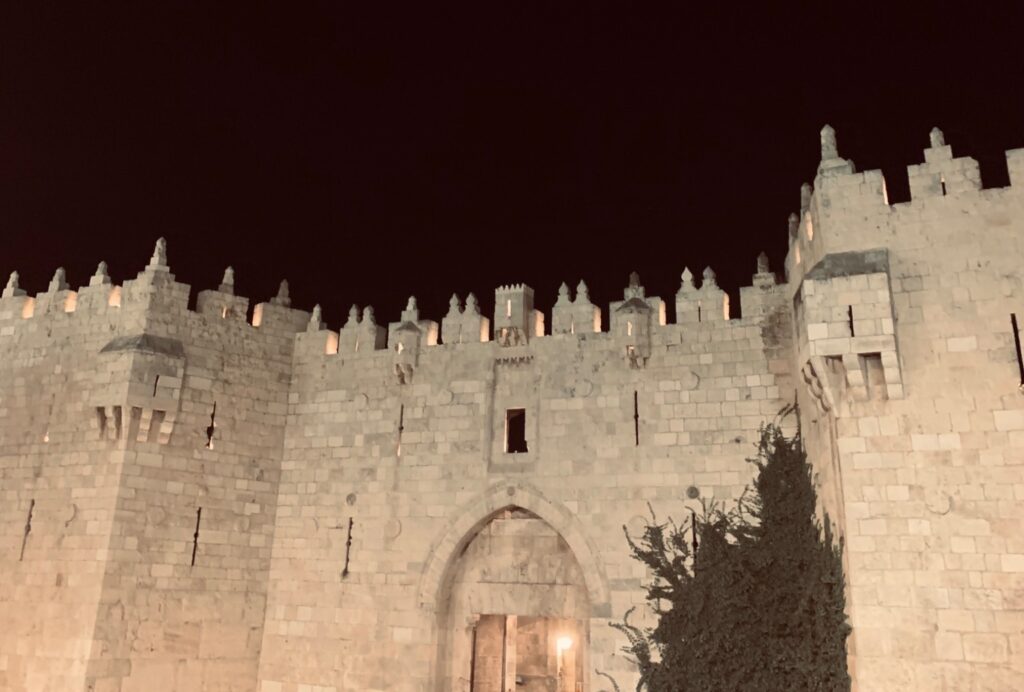
The beauty of the country was constantly combined with sad realities, all impossible to ignore. You wanted to feel excited to be in this blessed land, but that feeling couldn’t exist without its companion.
The journey towards Bayt Al Maqdis (Jerusalem) offered us sites that were both fascinating and heartbreaking. As we drove past different neighbourhoods, our tour guides educated us on what we could see: “You can distinguish the Palestinian homes from the black and white water tanks on top of their houses – their water supply is limited to filling these tanks once a month.”
But one of the most shocking truths that hasn’t left me till this day is this: some, born and raised in this country have never and will never be allowed to visit Masjid Al Aqsa, one of the holiest sites for Muslims. And all because of the mere fact that they are from the West Bank. As though being born in that part of the country is in itself, a crime. The only snippet of an opportunity would be during Ramadan, but even then you must be under 12 or over 50.
Once we arrived, disembarking the coach felt like a breath of fresh air – as though we had finally arrived in an area we could call home. And that’s how it felt, with those around us staring in excited curiosity you couldn’t help but feel welcome.
We had arrived outside the walls of the Old City, and what stood in front of us was the famous Damascus Gate. The gate where many years ago, Salah ad-Din Yusuf ibn Ayyub had entered to take back the city from the Crusaders.
Walking through these gates truly felt like stepping back in time. I stopped more than once just to absorb what it was that I was looking at. This life-changing piece of history happened right here, and I felt as though I was learning about my past. What a scene that must have been and what a moment it signified even to this day.
We were suddenly surrounded by different voices and rows of shops all selling and specialising in something different. From the most colourful sweets to freshly grown olives, everyone wanted to offer something. The walk to the hotel was so vibrant and uplifting, that you could feel how animated everyone was to be here.
As our group walked through the old city, there was the frequent, “Assalaamualaikum!” called out to us. What was it like to know that foreigners had come to visit your land, a place you’ve been holding onto for so many years? The words that come to mind are only my attempt to describe what I saw, reflected in their faces. They looked uplifted and reassured, perhaps because they knew we had also come to see them.
The hospitality shown by the Palestinians was quite literally at every corner. As our tour guides were frequent visitors, they shared stories and familiar exchanges with those in and out of the hotel. You knew where to get the best Shawarma and who to buy the best sweets from thanks to their regular direction and advice. It was hard not to feel looked after because of Taqwa Travels. It very quickly felt like travelling with extended family, and being introduced to relatives you didn’t even know you had. No one here felt like an outsider, because we weren’t.
Early in the trip, I quickly recognised the importance of having well-informed individuals with us when visiting a place of great historical and cultural significance. Without their expertise, there’s a massive risk of missing out on insights and perspectives that you might not expect. I was so curious about the significance of every detail, the impact of specific incidents, the people who had left their mark here, and the reasons behind them all. I felt so blessed to be part of a group that could be led and educated by respected and genuinely kind individuals, sharing beneficial lessons along the way.
Where do I take you next to share more of Palestine’s unique beauty? With so many places and incidents to choose from, what should come next?
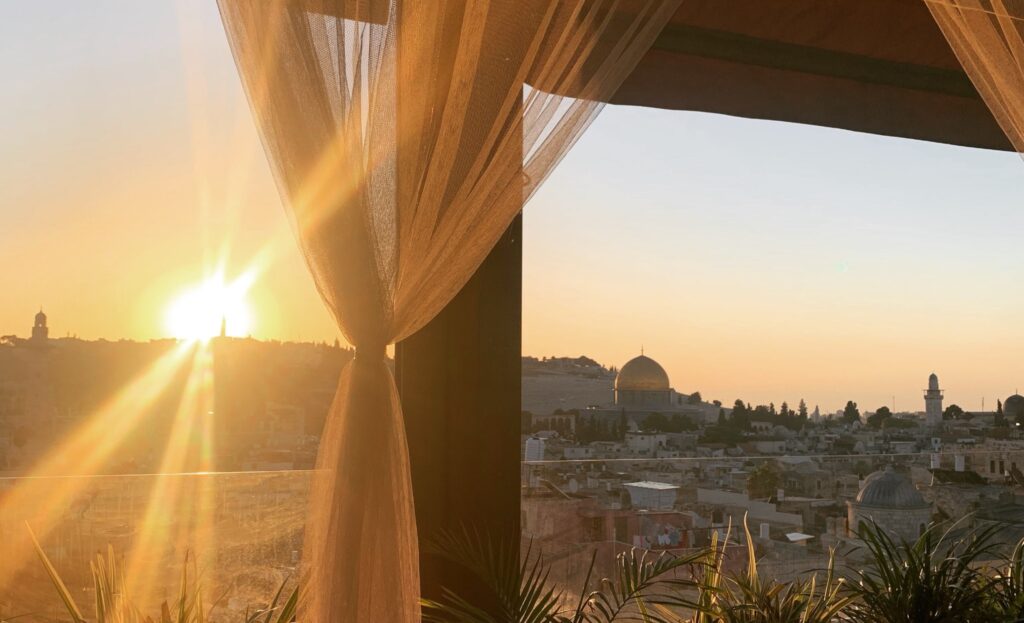
Masjid Al Aqsa
Each time I caught a glimpse of my surroundings, I would want to look again. The main building that stands out is undoubtedly the Dome of the Rock – its beautiful gold dome glowing at different points throughout the day. But collectively, the entire surrounding areas were fascinating to watch and stare out at. If you weren’t walking on its grounds, you wanted to be looking at it.
It was intriguing to me how the surrounding buildings all signified the religions that owned a quarter of the city. Domes with crosses on top of them could be seen everywhere you looked, synagogues, and mosques alike. A land of so much history and significance to more than one religion. It felt like reading a page of a book but not fast enough – there were just so many layers to dive into and explore.
From sunrise to sunset, entering and exiting the hotel to walk to Masjid Qibli and explore the grounds of Masjid Al Aqsa was what everyone wanted to be doing. Periods of rest were essential no doubt, but just so you felt refreshed and ready to absorb more each day. You wanted time to slow down just to savour everything you were learning and the feelings these brought. You didn’t want to miss a fraction of anything.
The portion of history one particular place can hold is incredible. We toured each quarter, beginning with the Muslim quarter and visiting places our Prophets had been. Even though there was no way of being certain about the exact place one might have stood or prayed in, there was no doubt about walking and standing where more than one Prophet had stood. And those realisations in themselves needed a moment.
From the place Maryam (A.S) used to perform her acts of worship to the area Prophet Muhammad (S.A.W) ascended from during the night journey – there were so many stories I felt like I was in the place of. Learning about the weight of the reward for performing one prayer in any section of Masjid Al Aqsa and its worth (250) truly opened my eyes to this incredibly special place and its significance. Wanting to visit for that reason alone, we were told, was enough.
Abu Huraira reported: The Prophet (S.A.W) said, “Do not undertake a religious journey but to three mosques: the Sacred Mosque in Mecca, the mosque of the Messenger of Allah, and the Furthest Mosque in Jerusalem.” (Sahih al Bukhari 1189, Sahih Muslim 1397)
